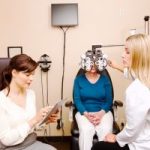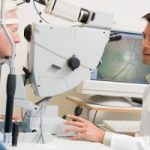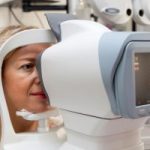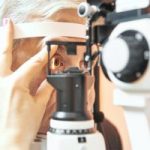 Glaucoma, a condition that affects the eyes, can be quite serious and even result in blindness. The older you become, the more prone you are to developing glaucoma. The age of glaucoma patients typically ranges between 45 and 64 years.
Glaucoma, a condition that affects the eyes, can be quite serious and even result in blindness. The older you become, the more prone you are to developing glaucoma. The age of glaucoma patients typically ranges between 45 and 64 years.
Glaucoma can strike without warning and without symptoms. There is no cure for glaucoma, so it’s important to take the necessary steps to prevent it. This can be done through nutrition and diet, which can deter the onset of this eye condition.
Normal-tension glaucoma: Causes, symptoms, and treatment
Advertisement
Normal-tension glaucoma is a type of glaucoma in which the optic nerve damage and vision loss occur even though there are normal levels of tension in the eye. Typically, glaucoma is caused by high eye pressure, which leads to damage of the optic nerve, but in normal-tension glaucoma, this is not the case.
Eye pressure, known as intraocular pressure, is measured in millimeters of mercury, just like your blood pressure. A normal eye pressure reading is between 10 to 21 mm Hg. Typical glaucoma patient’s readings of eye pressure are over 21 mm Hg, but in normal-tension glaucoma readings are appear to be normal, yet damage still exists.
Normal-tension glaucoma is similar to primary open-angle glaucoma. In the U.S., 15 to 25 percent of glaucoma patients have normal-tension glaucoma. Continue reading…
 Primary open-angle glaucoma: Causes, risk factors, and symptoms
Primary open-angle glaucoma: Causes, risk factors, and symptoms
Primary open-angle glaucoma can begin with no warning signs, so it is often referred to as the “silent thief of eyesight.” This is a chronic form of glaucoma which gradually reduces vision. Without a routine eye exam, this eye problem can very easily be overlooked, leading to vision loss eventually.
What makes primary open-angle glaucoma difficult to spot is that aside from not presenting symptoms, it doesn’t show any abnormalities either. Continue reading…
 Glaucoma: Natural home remedies and diet
Glaucoma: Natural home remedies and diet
It’s important to recognize what puts you at a higher risk of developing glaucoma.
Risk factors for glaucoma include: Age – as mentioned, glaucoma strikes individuals midway to later in life, Elevated internal eye pressure, Ethnicity – glaucoma is more common among African Americans and Asians, Family history of glaucoma, Medical conditions – diabetes, heart disease, Other eye conditions – eye tumors, retinal detachment, and Long-term corticosteroid use. Continue reading…
 Ocular hypertension may cause glaucoma and permanent vision loss if left untreated
Ocular hypertension may cause glaucoma and permanent vision loss if left untreated
Ocular hypertension means the pressure in your eyes (intraocular pressure) is higher than it should be – if left untreated it could cause glaucoma and vision loss. This is why having your eye pressure measured during regular eye exams is so important.
According to one ocular hypertension study, between 4.5 and 9.4 Americans aged 40 or older have ocular hypertension, which increases their risk of developing glaucoma. Glaucoma threatens sight. It is interesting to note that some people can have an abnormal eye pressure without experiencing vision loss, while others suffer significant vision damage. Continue reading…
 In glaucoma, rapid eye movements are significantly delayed, even in its early stages
In glaucoma, rapid eye movements are significantly delayed, even in its early stages
In glaucoma, rapid eye movements (REMs) are significantly delayed, even in its early stages. REMs are involved in many everyday activities, such as reading or scanning the surroundings.
Advertisement
Dr. Neeru Gupta found that people with glaucoma showed a delay in eye movement reaction times by at least 15 percent, even in the early stages of the disease.
The findings are significant because they suggest new ways to approach measuring vision loss beyond eye charts and visual fields, opting for real-world settings to determine the impact of eye disease on patients’ lives.
Glaucoma is becoming a common eye problem as the population is aging. It is estimated that by 2020 nearly 80 million people will be affected by this eye disorder. Continue reading…
